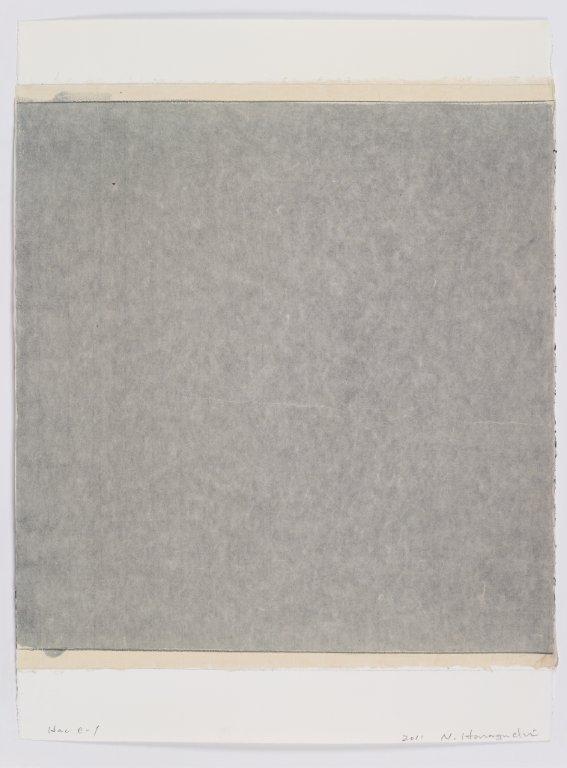Founded by Tokyo-based artists Nobuo Sekine and Lee Ufan, Mono-ha (translated as “School of Things”) was a contemporary art movement that developed in the late 1960s. Mono-ha artists aimed to “eradicate the remnants of Modernism,” often by juxtaposing natural and industrial material, and because works of the genre tend to be more experiential than visual, they usually demand patience and reflection. Noriyuki Haraguchi was one of the students involved in the important movement. Haraguchi has been making large sculptural works that tackle industrialism and militarism for 40+ years, but he considers his works on paper, like Untitled, to be a fundamental part of his process where he can train his creative thoughts. In talking about the experiential in his recent works on paper, the artist says:
[A] pencil line, drawn hard, matches the pattern of one’s thoughts. The viewer may say, “What is this? Is this just a single pencil line, drawn like this?” But inside it is an extremely complex world, entering that place of complete abstraction. It is very efficient, rational, and yet impromptu.
Haraguchi’s work first came to prominence in the West in 1977 at Documenta, where his Oil Pool sculpture attracted a great deal of attention. Since then, his work has only occasionally been seen in the United States and Europe, most notably at the Lenbachhaus in Munich in 2001. Retrospective exhibitions of his work have recently been held at BankART, Yokohama, Japan, in 2009, and the Yokosuka Museum of Art in 2011.
